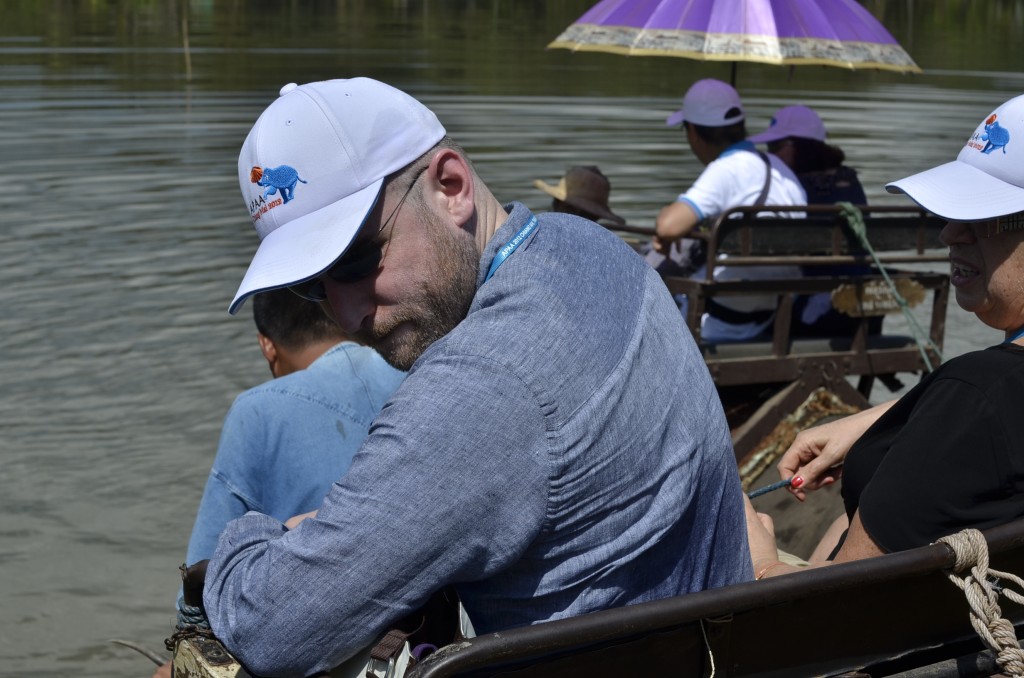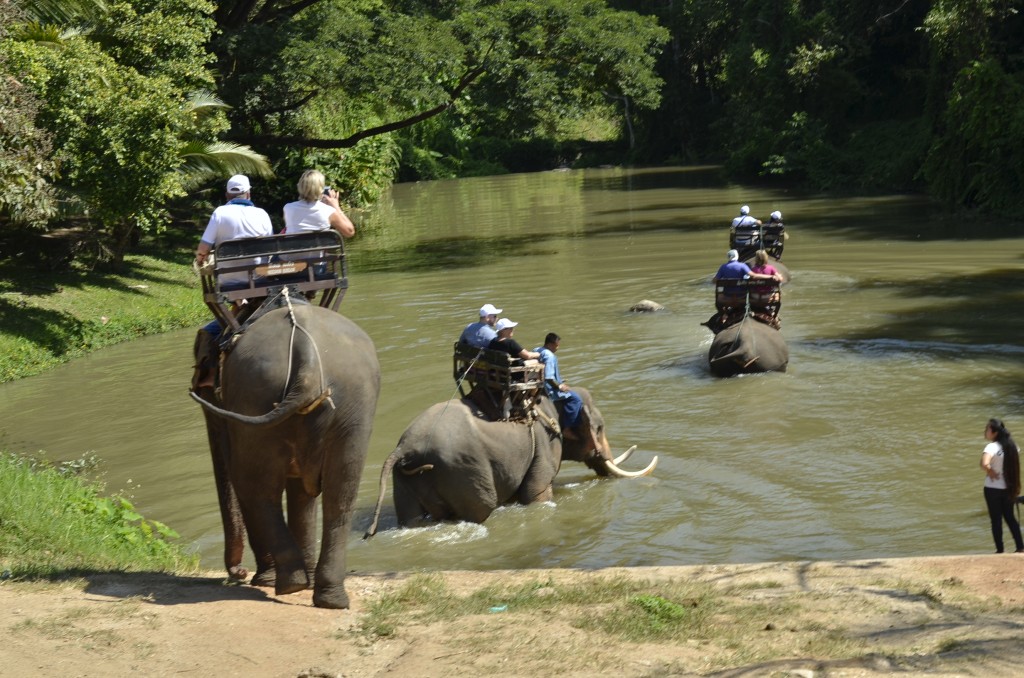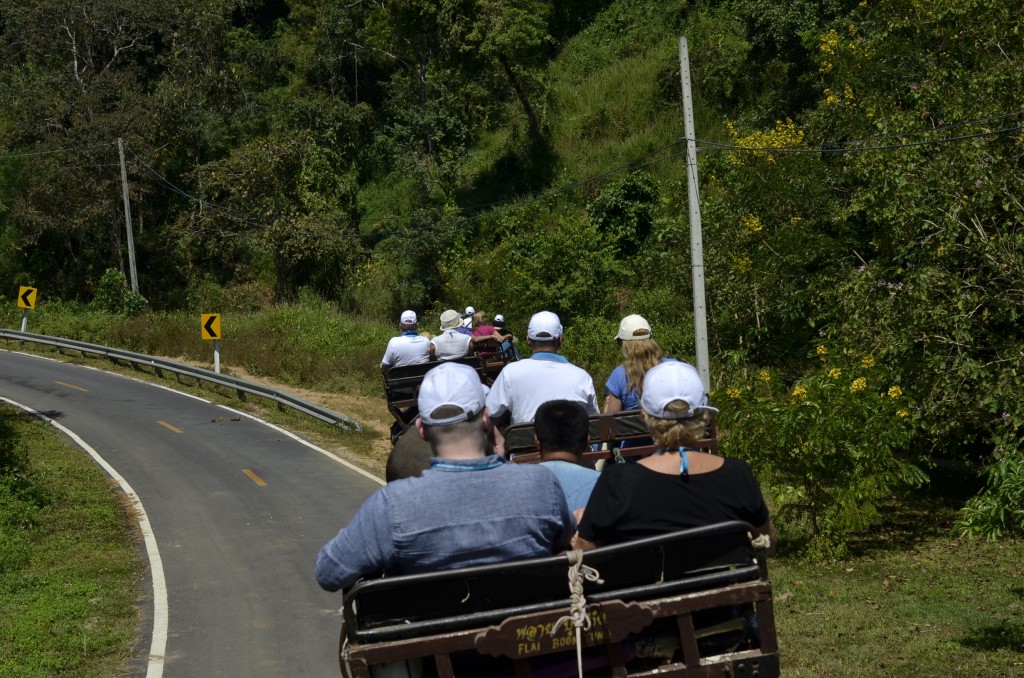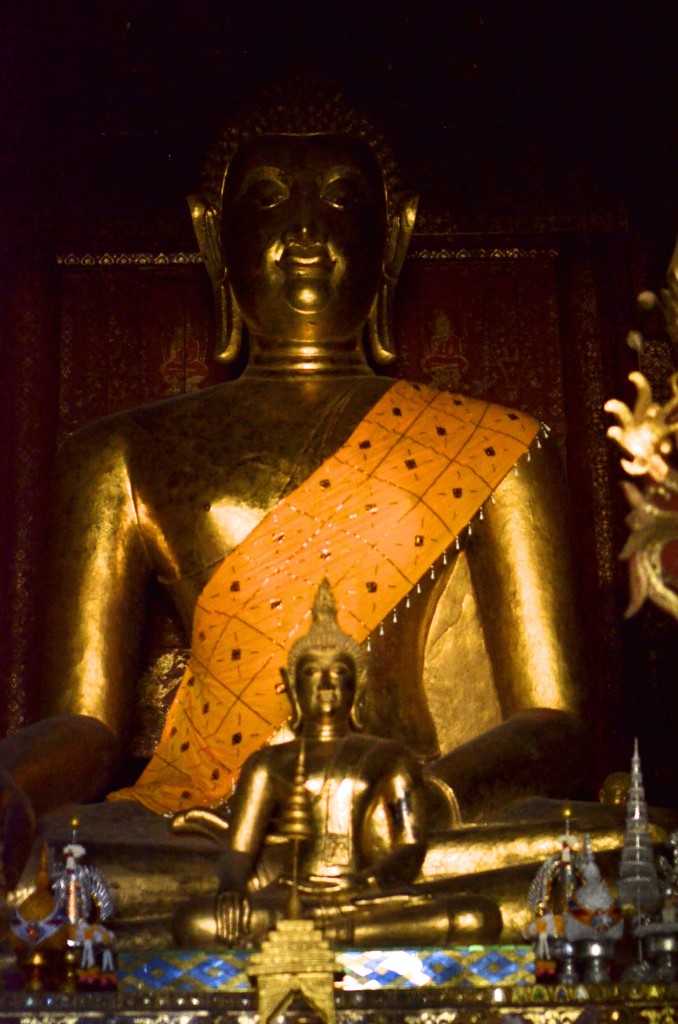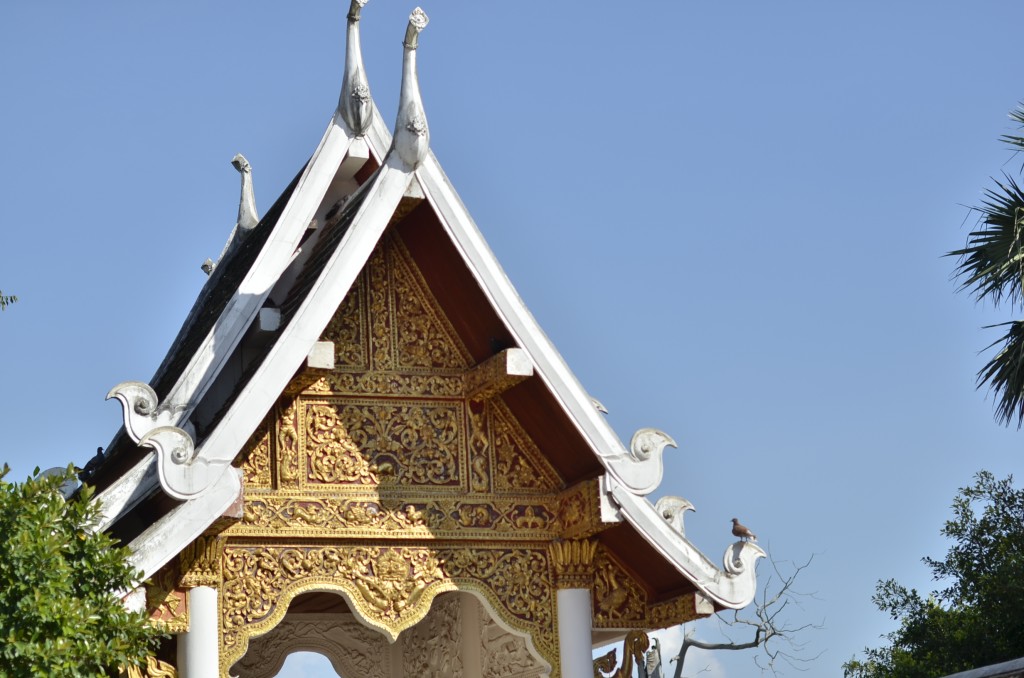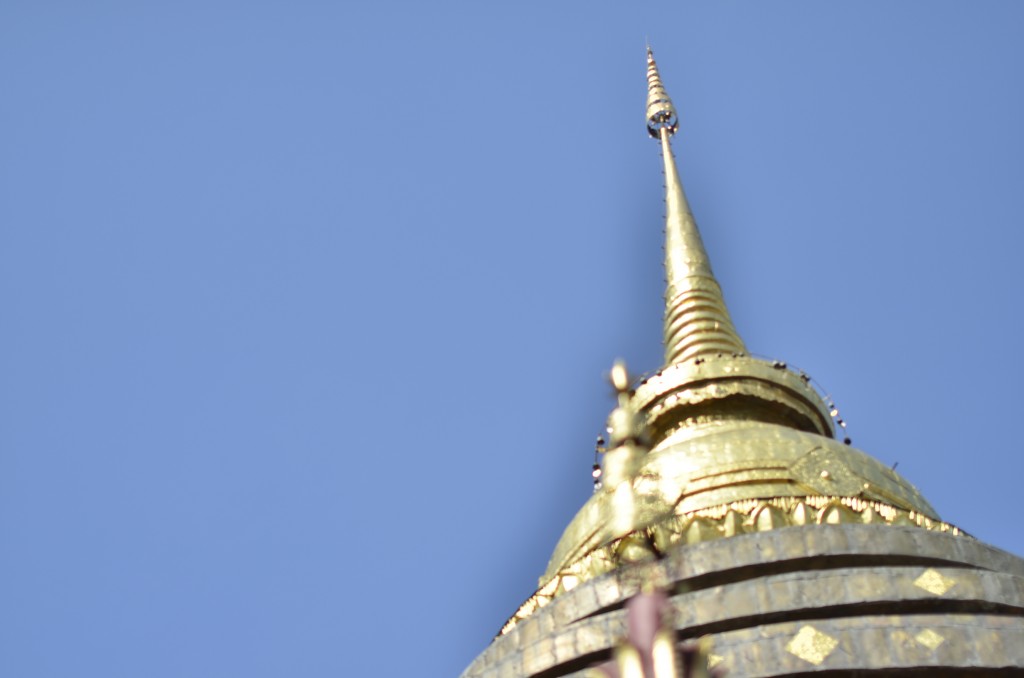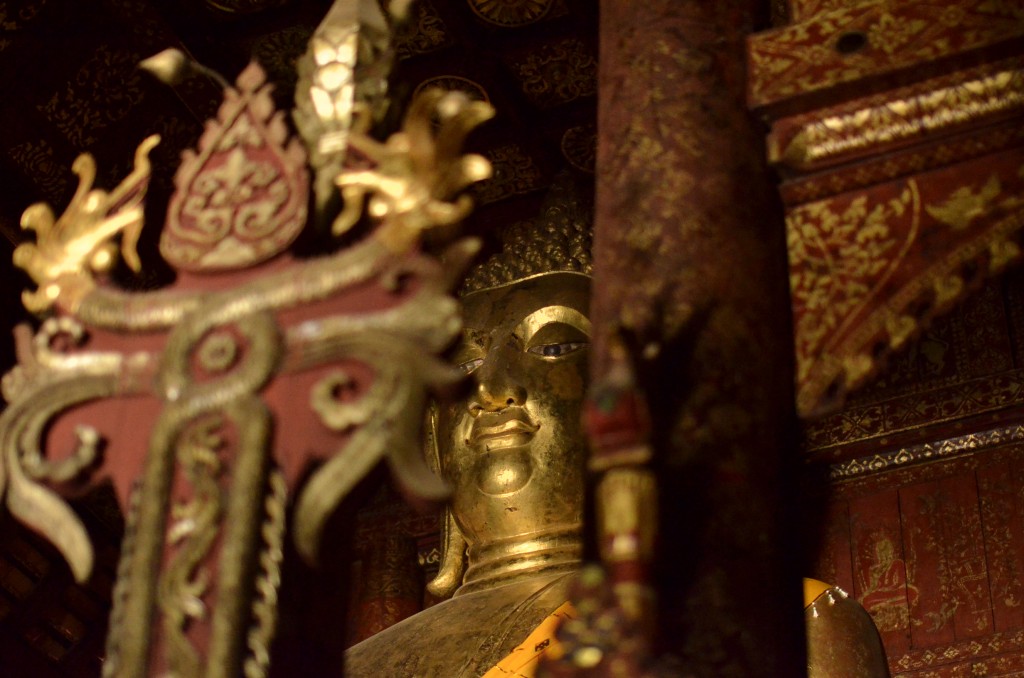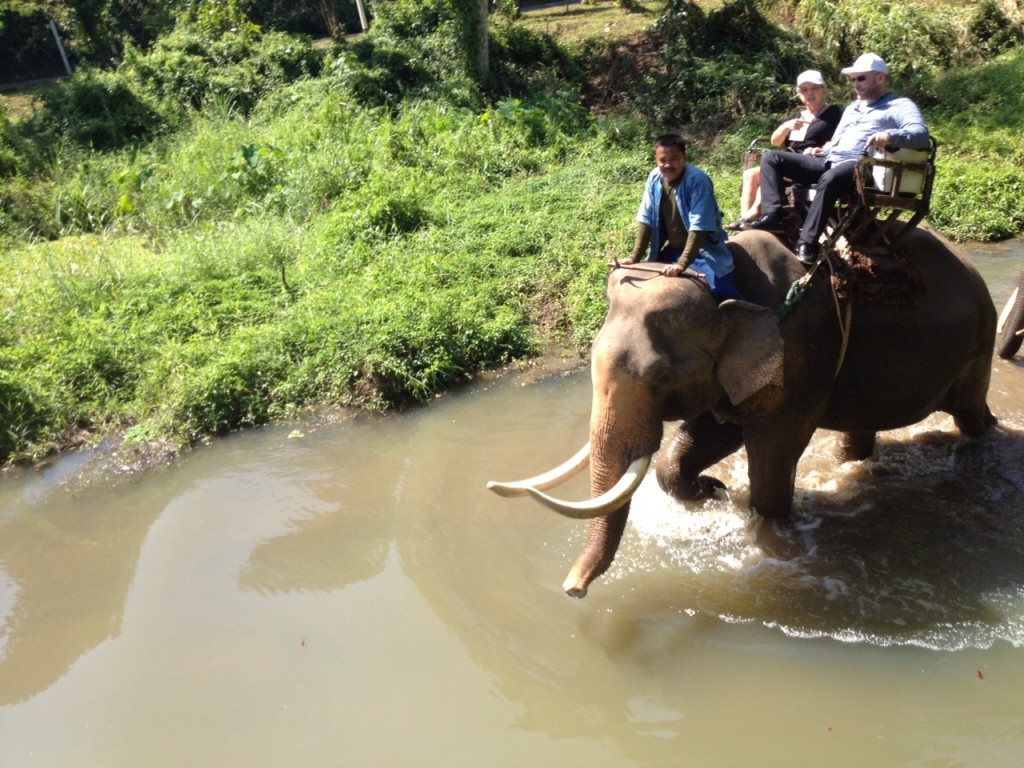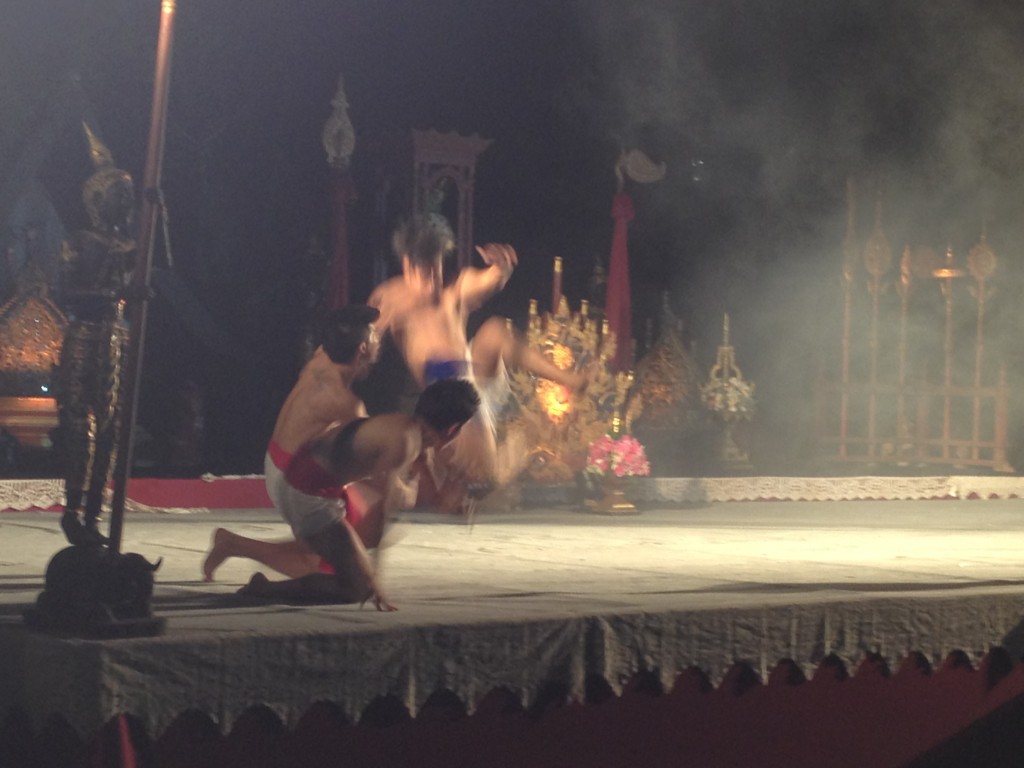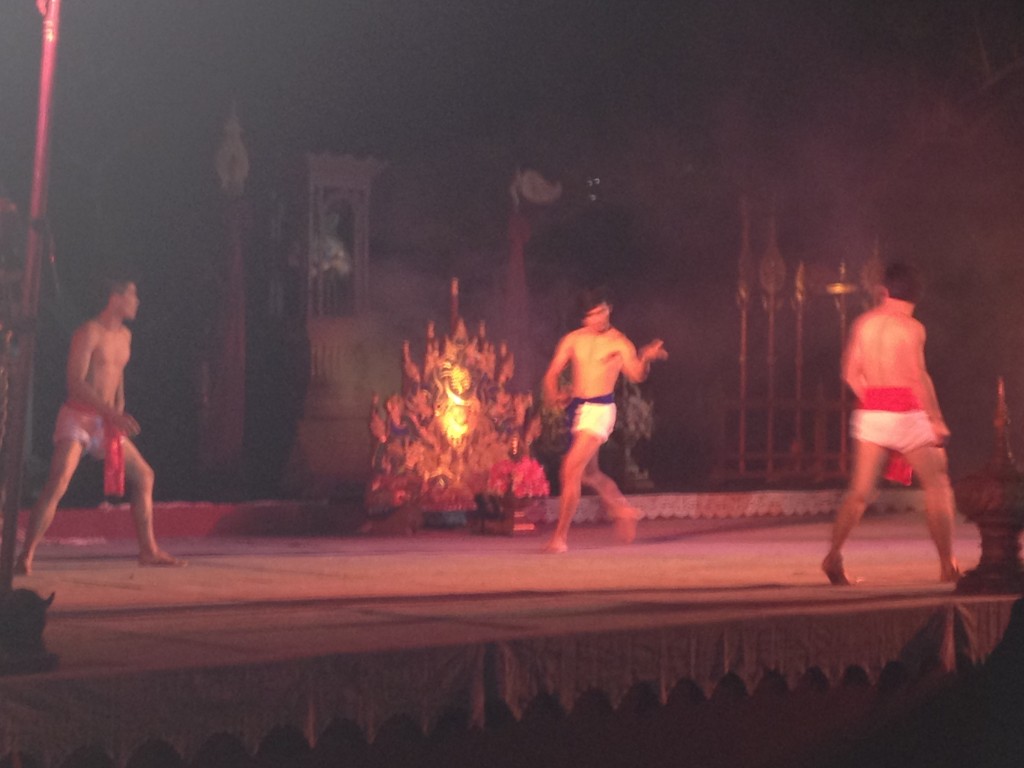Genesis 2012 – Better late than never?
1January 18, 2013 by IPAlchemist
It is now over a month since Genesis, the UK’s flagship life science and healthcare networking conference. I had always intended blogging about it – I was very excited to attend the whole event for the first time, because in previous years the most that I managed was to pop in for a little while, or attend the dinner. The problem is that, after the event was over, nothing really came into my mind that I wanted to say. So the blog piece got put off, until now, at the one-month stage, I feel I really need to write it, whatever.
Normally when I go to an event, I come away with something that I want to say, but on this occasion it didn’t really happen. It is not that I did not enjoy the event – I enjoyed it immensely. I met many interesting people for the first time, as well as running into various One Nucleus stalwarts that it was a pleasure to see again. There were of course many patent attorneys in attendance (although with some notable and noticeable absences), and it is rarely disappointing to meet a patent attorney. There were many interesting and stimulating discussions, as well as the formal presentations.
In particular I attended the afternoon session on Antibody-Based Therapeutics which yielded many fascinating brief stories (although one, which I feel I should not name, was basically “We have great idea but it is so early stage we can’t tell you what it is yet. It might not work – we don’t know yet, but if it does it will be amazing”).
In the morning I attended a case study on the deal between Astex, Cancer Research Technology and The Institute of Cancer Research relating, of course, to an anticancer compound. This revealed fascinating insights into how such complex deals come into existence and what drives the terms and the choice of partner.
I also attended the morning plenary session and the afternoon plenary debate. And perhaps that is the issue. Annual events such as Genesis prompt a certain amount of navel gazing. The industry as a whole, in its widest sense including service providers and academia as well as pharmaceutical and biotech companies of whatever type, considers “are we in good shape”? And now seems a particularly troubling time to ask this question, because, as the plenary debate made clear, one can equally argue for optimism pointing to all sorts of wonderful positive signs, as for pessimism pointing to all the harbingers of doom. And I wonder whether it might not be better if the answer was clearly negative, because then we could agree that there is a problem and do something about it: I feel maybe that the lack of consensus is itself the reason for the feeling of unease.
I will end on a harbinger of optimism, a fellow blogger that I have added to my blogroll, Lucy Robertshaw. Lucy was a model of optimism and enterprise, having moved from the UK to Sweden to set up her own consultancy company. She also cleverly worked out that if you get the right photo, you can do quite a short post! That was my APAA strategy, but foolishly I took no snaps at Genesis.
Category Chemistry, IP (Intellectual Property), News | Tags: Genesis, healthcare, life science, One-Nucleus
Making Sense of Scents – British Society of Perfumers
1January 16, 2013 by IPAlchemist
Can we really be two weeks into the New Year already? I intended to have a quiet December relatively free from social media activity, but that was supposed to be followed by an active January. It has not quite panned out that way. I have joined the IPKat as a permanent member, so my IP-blogging will mostly be done there. That leaves plenty of other things to write about here – it is, as usual, just a question of finding the time.
On 10 January (nearly a week ago now!) I attended a fascinating event, again at the Royal Society of Chemistry, but this time in association with the British Society of Perfumers, and also supported by IFRA (the fragrance trade body) and basenotes (a website for fragrance enthusiasts). The format was not actually that clear from the advance information, but I attended because I have a long-standing interest in the chemistry of fragrance. Like many things, fragrance is underpinned by a lot of chemistry (a fact that perhaps escapes many people), and in a previous incarnation I used to do some patent work in this space.
When I turned up, the event, entitled Making Sense of Scents, turned out to be a kind of question time, with pre-submitted questions, and further and follow-up questions from the audience, being put to a fabulous panel of experts, namely:
John Bailey, current President of the British Society of Perfumers
Steve Pearce, CEO and Founder of Omega Ingredients Ltd and Maverick Innovations Ltd
Penny Williams, Perfumer and consultant, Orchadia
Grant Osborne, Founder, basenotes
Lisa Hipgrave, Director, IFRA
Ruth Mastenbroek, Perfumer, Ruth Mastenbroek (eponymous niche perfumery)
Will Andrews, Fragrance Scientist, P&G Prestige
I didn’t keep detailed notes, which is why I should have written my blog post a lot sooner. But several points stuck in my mind.
When asked whether perfumery is an art or a science, the panel responded unanimously and in unison: “Both”. Of course that is so. Even chemistry is an art as well as a science, so of course perfumery is also. It was noted that there are “no young Master Perfumers”, and that the acquisition of the necessary knowledge set takes a long time.
I was happy to see it acknowledged that perfumery is a branch of the chemical industry, without equivocation. That means that it has not been untouched by the increasing regulatory pressures applied to chemicals generally. As I understand from what was said, the use of certain fragrance compounds has been banned, while others are permitted only at specified concentrations, depending upon the nature of the final product. Of particular recent concern is apparently the development of allergies to particular fragrance compounds, which is a two stage process – initial sensitisation, requiring exposure to a sensitising dose, after which the allergy can be triggered by the compound at a much lower level. IFRA in particular hope that this issue can be addressed by ensuring that the sensitising dose is never reached. Friends of the IP Alchemist will know my frustration over chemophobia, where “chemical” equals “something toxic” while “natural” equals “safe”, and will therefore not be surprised that I was reassured to note that it was acknowledged that certain flower oils (i.e. “natural” essential oils) are amongst those associated with allergic responses. Of course. I do not quibble at all with sensible regulations that in widely distributed products only compounds with appropriate safety profiles are used. But I do worry that a safety agenda is being driven by an ill-informed constituency, with poor understanding of risk, and fuelled by chemophobia.
I enjoyed seeing the breadth of the fragrance industry, from the ultra-niche perfumer, to the fragrances that are put in household products such as cosmetics and cleaning products. The full breadth was represented on the panel, and their perspectives did not, so far as I could see, differ much on most of the key questions.
The audience, perhaps surprisingly, could field only one person willing to identify themselves as a “perfumista”. The problem for such people apparently is that many fragrances are offered only in larger quantities than a collector wants – someone who wears only one fragrance may wish to buy 100ml bottles, but the person with a collection of 100 fragrances will want smaller unit sizes.
There was an interesting opening question as to why smell is so evocative. Apparently that sense, unlike the others, feeds directly into the limbic system, a more primitive part of the brain than that responsible for the other senses. This was news to me, and makes a lot of sense (boom boom).
There was an interesting discussion around marketing – surely more central to the fragrance industry than almost any other. In particular because of the rise of the internet and social media, it becomes possible to have a highly niche brand, or, indeed, an array of ultra niche brands. So some brands may choose to position themselves as actually unattractive to a large section of consumers in order to be more attractive to their very small target market (who don’t want other people to be wearing their fragrance). Thus, although mass market fragrances continue (and the even larger market of consumer items where the fragrance is incidental also thrives, despite those like the IP Alchemist and at least one other audience member who dislike such incidental smells), there is a burgeoning sector of niche scent. Grant Osborne referred to Etat Libre d’Orange as a fragrance house whose website proclaims:
fragrance has been liberated from the traditional restrictions of the perfume industry, where even the most talented noses are subjected to the expectations of brands and are forced to conform to the demands of the marketplace.
and whose perfumes are given names than many people might find unattractive or even offensive.
There was a drinks mixer after the panel session, where I had the delight to meet another past president of the BSP, David Ruskin, as well as two of the panellists Grant Osborne and Ruth Mastenbroek. Ruth, pleasingly, is like me a chemistry graduate of Oxford University who also spent time in Japan – of course the best start to any career.
I hope to attend and report back on further perfumery related events in due course. This should be a bumper year as the BSP is celebrating its 50th anniversary in 2013.
Category Chemistry, Science | Tags: BSP, chemophobia, fragrance, Perfumer, RSC
Natsukashii – Pictures from Japan
0December 1, 2012 by IPAlchemist
I posted a couple of weeks ago about my thoughts about how best a visitor to Japan might best spend limited time. This was inspired by Jess the Chemist. She has sent links to some lovely pictures both urban and leafy, so I thought I would post a link. Here it is.
Natsukashii is an adjective describing nostalgic feelings. People usually use it in relation to Japan, because the word is Japanese.
Stuck in London, I can’t photograph architecture or foliage, so here are some cats. Everyone loves cats.
I expect you will prefer Jess’s pictures.
Category Uncategorized | Tags:
Call to Rescue Adjectives in Pain!
6November 30, 2012 by IPAlchemist
How is it nearly two weeks since my last post? I intended to have a period of respite following multiple postings at APAA, but was still vaguely intending an approximate one-a-week rate. But nearly two have slipped by. Never mind – I can remedy the situation immediately. So I shall.
Today I am going to have a rant. Sorry – polemical piece designed to provoke thought and discussion. No – I was right first time – rant. Everyone likes a rant. I think this will be my first blog rant. And the subject is one of my promised three – language.
A couple of weeks ago I saw a comment on a blog where a lawyer said that he had “lateraled” into his current position. That’s right – “lateral” as a verb. I don’t know how one should spell it – since it should not be written anyway, the “one l or two” question should never have arisen. So, for the sake of this piece, I shall use one l.
This is not the first time that I have seen an adjective used as a verb. It is, I regret to say, more often observed in US usage, although (as we shall see later in this post) the most egregious example that I have encountered was in the UK. The first time I observed the phenomenon was over a decade ago in an advertisement on the New York Subway that informed its readers that a certain printer “compatibles” with a range of popular computers.
In both these cases, a perfectly innocent adjective has been minding its own business and has then been dragged, kicking and screaming, into service as a verb. This cannot be. In the English language we have parts of speech, and they have to be respected. I fully concede that a language need not do this, and there is no intrinsic requirement in language to distinguish between an adjective and a verb. The Japanese language is quite happy, for example, to press a whole range of words into service, with only minor manipulation, as nouns, verbs and adjectives. And another type of adjective in Japanese displays verb-like qualities such as tense. But this is English we are talking about. It simply will not do to flagrantly disregard the basic categorisations of words. While I can just about accept the shift of category from adjective to noun, although sometimes with regret, the leap to a verb is a shift too far.
I said that this usage was not restricted to the US. A few years ago, I was talking to a friend about his company taking over a contract to provide certain public services. I asked what would happen to the employees of the existing provider. “Oh,” he said, “we just TUPE them over.” (For those of you who may not be familiar, “TUPE” stands for “Transfer of Undertakings (Protection of Employment) Regulations”, and refers to the rules protecting employment rights in such situations where one company takes over the provision of services from another.) “TUPE them over?” I shrieked, wincing. “You are using an acronym as a verb! Can’t you hear it scream? Can’t you hear its pain as you mutilate it in your Procrustean bed of a sentence?” (He couldn’t.) “Everyone says it,” he justified. As if that forgives flagrant disregard of all linguistic sensibilities. (It doesn’t.)
So here I stand, founder member of the Call the Rescue Adjectives in Pain. Post a comment if you share my pain and wince when you hear a word used as an incorrect part of speech.
And next time – watch out for news of the Society to Salvage the Subjunctive!
Category Language | Tags: Adjective, grammar, verb
Visiting Tokyo and Kyoto – Darren’s Recommendations
0November 17, 2012 by IPAlchemist
Dr Jess, known on Twitter as @JessTheChemist, is off to Japan to go to a conference in Kyoto, and has asked for recommendations while there. It is not the first time that I have been asked for such suggestions, as I lived in Tokyo for two years 1996-1998, and have been back most years since 2001, so it seemed worth putting my thoughts on a blog post so that they are there for anyone else too. So here goes.
KYOTO
There is too much to see in Kyoto. I have only seen a tiny fraction – for example, I have never visited the old Imperial Palace.
Things I have seen and would recommend (which I remember as “the one with…”) are as follows:
Kiyomizu-dera
This is one of the most famous temples and is considered a “must see”. Avoid the young people offering to guide you around in return for practising their English – they are annoying and know nothing about the place.
Kinkaku-ji (The Golden Temple)
The one with the gold-covered temple pavilion, and is also generally considered a “must see”.
Ginkaku-ji (The Silver Temple)
The one with the frustoconical pile of sand. (Confusingly, there is no silver temple pavilion in it). Also features high on the tourist agenda.
Sanjusangen-do
The one with 1001 buddha statues which was one of my favourite Kyoto sights.
Nijo-jo
Called a castle, but actually it was a palace for the Shogun. Civil architecture a welcome relief from all the temples.
Ryoan-ji
The one with the garden with 15 stones and a wall with a funny stain. (If you don’t go here, try to go to another Zen stone garden – you should probably try to take in one).
Nishi Hongan-ji
Worth visiting if you are in the area (which is likely since it is close to Kyoto station). It has a huge impressive main hall.
Myoshin-ji
The one with the dragon on the roof and the mediaeval sauna. This is a great place – a temple in a huge temple complex. I think it is not on the general tourist circuit, and, at least when I went, was very much less busy than anywhere else I ever went to. Description here.
I wouldn’t bother with the Heian Shrine, which is modern and dull. This is my only anti-recommendation.
I treasure two shopping experiences as well.
Jusanya, which sells boxwood combs and is situated in a lovely market (location described here.)
Aritsugu, which sells Japanese kitchen knives, a work of art in themselves. Also in a nice market (location described here.)
NARA
If you never saw anything at all in Kyoto, but instead got on the train and spent the whole time in Nara, I don’t think you would have made a bad decision.
The usual tour includes Nara park (with the deer, to which you can feed rice crackers that they sell there) and Todai-ji – the one with the giant Buddha statue. Both of which are lovely.
For me, the real treasure is Horyu-ji, which is my favourite temple in Japan. It claims to be the oldest wooden structure in the world. The atmosphere there is quite magical. If I could see only one thing in Japan again, this would be it.
But also very highly recommended is the Toshodai-ji, in a different part of Nara, and also quite lovely. It recently emerged from a long period of refurbishment, I am told.
TOKYO
There is nothing old in Tokyo, basically, so if you want to see traditional Japanese stuff, then you probably need to do a day trip. My recommendation would be Nikko, but Kamakura is also popular. If you stay within Tokyo itself, then Asakusa has a temple which compares reasonably favourably with those in other parts of Japan. (Any Tokyo apologists reading this – sorry, but you know it’s true!)
If I could do only one thing in Tokyo, it would be to have lunch or dinner in the restaurant Ukai Toriyama (website here.) It is a way out of central Tokyo, and you have to take the Chuo line out to Takao-san, and then a minibus supplied by the restaurant, but it is doable if you seek guidance, for example from your hotel (or just the restaurant website). The journey take about an hour.
I will now get down to serious heresy. People talk about the different parts of Tokyo having different characters, but I find that many of the main department stores, for example, repeat all over central Tokyo, and so rather than fight your way to Ginza or Nihonbashi, you might as well look out the Mitsukoshi or Takashimaya that is closest.
On the subject of department stores, most have restaurant floors, usually near the top, and these are rarely a bad place to look out to eat. You get a very large selection of eating possibilities in a small space, and usually with pictures or models that will give a good idea of what the food is likely to be.
If you get a clear day, find a tall building with public access and admire the view. These used to be in short supply (and I used to recommend tea or cocktails in the lobby bar at the Park Hyatt in Shinjuku – I swear I did this before it appeared in Lost in Translation) but so many tall buildings have sprung up since my time that it is hard to avoid finding one. So there seems very little point in going to Tokyo Tower any more.
If you fancy seeing Mount Fuji from Tokyo, which can be done especially in winter, the best time is first thing in the morning. Daytime or evening it usually gets hazy. You don’t need a particularly tall building (I used to see it from 5th floor at Tokyo Institute of Technology), but you do need uninterrupted view in the right direction, and this can now be hard to find.
I expect more thoughts will come to me over time, in which case I will add them.
Category Travel | Tags: Japan, Kyoto, Nara, Tokyo
Another RSC Policy Event – Synthetic Biology
3November 15, 2012 by IPAlchemist
Last night I went to the RSC for another of the series of events on chemistry policy, following the two last month that I wrote about on this blog. This time, the subject was “Synthetic Biology: challenges and opportunities for the UK”.
It was another great event, but quite different from the previous ones. It was not about an individual project, unlike previously where each lecture had focused on a particular molecule (one pharmaceutical and one agrochemical). And the format was quite different too – a largish panel each spoke for about 5 minutes, and then there were a series of questions from the floor.
I was very gratified that on this occasion Twitter was encouraged, and we were provided with a hashtag #synbio2012. (Usually, in the Chemistry Centre, we are told to turn off our mobile phones because they interfere with the sound recording equipment). If you want a blow-by-blow account of the event, a search on that hashtag should work well (for a while) as there were a number of professional reporters and writers present who are highly skilled in the art of real-time tweeting (unlike your humble servant).
The event was technologically ambitious, being live-webcast, and having a live video link with a second audience at the University of Bristol. This impressive setup only failed slightly sometimes when there was a strong echo from the Bristol venue.
The Biochemical Society has a better advance listing than the RSC, and I gratefully take my biographies of the speakers from their website.
The impressive chairman was Dr Ehsan Masood – Editor, Research Fortnight.
Ehsan is a science writer, journalist and broadcaster. Since 2009 he has been Editor of Research Fortnight and also teaches a course in international science policy at Imperial College London. As well as writing for Prospect magazine, The Times, Guardian and Le Monde, he writes and presents programmes for BBC Radio.
The panel in London consisted of:
Dr Lionel Clarke – Chairman, UK Synthetic Biology Roadmap Coordination Group
Lionel chairs a group of independent experts who have set out A Synthetic Biology Roadmap for the UK. Its recommendations include investing in multidisciplinary centres, an annual forum, and funding competitions to support the development of novel applications. It emphasises responsible research to support the UK taking an internationally leading role. Dr Clarke joined Shell in 1981 and has been responsible for planning and delivering strategic research programmes there for more than ten years.
Professor Robert Edwards – University of York and Chief Scientist, Food and Environment Research Agency
Professor Edwards is the Chief Scientist for FERA and a Chair in Crop Protection in the Centre for Novel Agricultural Products (University of York). His research focuses on countering herbicide resistance in weeds, wheat biotechnology and biorefining. His group have discovered two new classes of plant glutathione transferases and identified their roles in soy, wheat and maize herbicide metabolism.
Daisy Ginsberg – Synthetic biology writer and commentator
Alexandra Daisy Ginsberg is a designer, artist and writer, interrogating science, technology and new roles for design in a biotech future. As Design Fellow on Synthetic Aesthetics, an NSF/EPSRC-funded project at Stanford University and the University of Edinburgh, she is curating an international programme researching synthetic biology, art and design, investigating how we might ‘design nature’.
Helena Paul – Co-director, Econexus
Helena is a co-director of EcoNexus, an organisation analysing developments in science and technology and their impacts on environment and society. She is also involved in the international negotiations of the UN Conventions on Biological Diversity and Climate Change. Dr Paul is currently monitoring UK research on synthetic biology, including consultation with the public and the conduct of scientists in connection with scientific uncertainty.
Described as the “chair” in Bristol, but in the event acting more like a further panelist (which was welcome, as he spoke very well indeed) was Professor Dek Woolfson – University of Bristol
Dek has been a Professor of Chemistry and Biochemistry at the University of Bristol since 2005. His research group’s focus is the prediction and design of protein folds and their application in bionanotechnology and synthetic biology. In 2011 Professor Woolfson won the RSC Protein and Peptide Science group’s Medimmune Protein and Peptide Science award, which is awarded in recognition of excellence in any area of protein and peptide science.
It will probably be somewhat apparent from the biographies that all except Helena pretty much assumed that synthetic biology was A GOOD THING. Their discourse focused on whether it would achieve what was hoped of it, whether it had been over-hyped, and how to foster public engagement and acceptance. They were referring to (and buoyed up by) George Osborne’s speech from last week, on importance of synthetic biology to the UK, as for example reported in The Guardian.
Helena was a lone voice advocating the precautionary principle. While the others accepted that there was a serious public engagement issue to avoid a repeat of GM crops being labelled “Frankenfoods”, none of them to my mind seriously engaged with people who genuinely consider that with biological developments we need to set the bar of confidence that no harm can possibly result at a very high level indeed. It seemed as though Helena and the others were simply taking part in parallel events that were not interacting with each other.
To be clear, I do not agree with the precautionary principle being applied to developments in synthetic biology, but neither do I think that we can just carry on talking as though its proponents are not in the room. So I used my question to ask:
Is there any way to bridge gap between proponents of precautionary principle and those who do not espouse it?
Even this did not really result in what I would regard as real engagement. There was some discussion of “what would have happened if the precautionary principle had been applied to motorised transport”, which is a good point, but, as Helena did point out, ultimately irrelevant as people who advocate the precautionary principle consider that there is an issue with organisms (which are replicating) that render them fundamentally different, and in need of a far, far higher level of regulatory caution than any other technology.
My own “what if”, although equally irrelevant ultimately, is the story of CFCs. They were brought in to replace the toxic and dangerous refrigerants that were used in domestic fridges, but turned out, completely unexpectedly, to harm the ozone layer. But this was not an irreversible effect, and it is in principle possible to stop using them and return to something approximating to the status quo ante.
Having squandered my question on this issue, I did not get a chance to talk about the IP issues, although I did tweet a little on the subject. A sensible question was asked about the effect and role of IP on synthetic biology by Dylan Williams (@vitamindyl), but it did not really result in very informative answers, and I regret that I was not able to dive in.
A particularly regrettable response was from Helena, who said that she worried that patents would be used by companies to tie up the technology and hide what they were doing. Of course fundamental to the concept of patenting is disclosure, and so use of the patent system will actually help, not hinder, dissemination of the technology and publication of what is being done.
There was some talk that the “biobricks” might be open source. This may or may not turn out to be true – it might happen, but there would be no way to ensure that it happened universally.
My expectation is that the basic rules of patenting – an invention must be new and involve an inventive step to be patentable, plus the requirements of disclosure and to be not contrary to morality, will turn out to be quite sufficient to deal with the issues presented by synthetic biology, and I do not see that the discipline presents any special new issues that would require dealing with in a different way. I certainly don’t expect that it will need its own separate legal framework. How then companies choose to use IP Law – in a collaborative way or in a proprietary way – or, as is most likely, as a mixture of the two – remains to be seen. But I am confident that the patent system will provide within itself the necessary flexibility to underpin whatever approaches are adopted.
A final observation. It is curious that no-one actually defined what they meant by “synthetic biology”. While I heard “it is not genetic engineering”, and I heard various qualities attributed to it, no-one actually said what they considered the term to encompass. Since the semantic meaning of the term is rather vague, if we are going to discuss issues like what will it do and how should it be regulated, I think we do need precision about the scope of the terminology. I slightly formed the impression, although I could well be mistaken, that not all the panelists and question askers were assuming the same meaning.
Final verdict – a fascinating evening and I look forward to another.
Category Chemistry, Science | Tags: RSC, science policy, synthetic biology
APAA – A better photographer
0November 11, 2012 by IPAlchemist
On the excursion day at APAA, I was accompanied by the excellent Mr Shinji Okayama, a Japanese patent attorney who has taken the courageous decision to move from his native Japan to Denmark to work at Plougmann & Vingtoft. I had major camera envy, and the results testify to both his superior equipment and his superior skill. Shinji has kindly sent me some pictures, and permitted me to reproduce them on my blog, so here you are. Thank you Shinji.
Category IP (Intellectual Property), Travel | Tags: APAA
Chiang Mai APAA 2012 – Day 4 and end of Congress
0November 1, 2012 by IPAlchemist
It is now Thursday afternoon, and my last few posts have all been pictures, so I think it is time to return to my familiar (and preferred) medium of language.
My photos were not that great, some taken just with iphone with challenging illumination conditions. They then needed downloading onto my laptop, followed by an attempt to indentify ones that even merited posting. Then there was quite a time-consuming and error-prone uploading process because of the rather limited bandwidth of the WiFi connection here. So apologies for the lack of real-time illustrations.
The excursion day was lovely, as I hope the piccies show. I had great travelling companions, even if our guide was a little shrill and over-enthusiastic. The elephant centre was much more fun than I had imagined, and I was quite surprised to find myself really looking forward to the elephant ride. I don’t know how humane it really is, but it was a wonderful experience.
The temple is apparently the oldest in northern Thailand, and was very moving. The main hall was being renovated, but the smaller halls were still interesting, and the main central pagoda, of copper (it seemed) with gold overlay, was magnificent – this is what is in the picture I posted.
Mercifully, I then had time for a shower before heading to a lovely reception hosted by the pan-Asian firm of Axis. We were treated to some wonderful hospitality.
So what then of the title of this post, the final day?
Well, firstly it was the only day where I went to any business session of the conference (I don’t count the opening ceremony). Most of the delegates in fact largely disregard the official programme, and indeed significant portions are reserved for members of APAA, or sometimes even only for council members. I was struck by how, in contrast to the open informality of the rest of the proceedings, the formal programme was very – well – formal.
I luckily joined the session in time to learn that the special topic of the Design standing committee for next year will be mobile communication devices. As I am chairing a session on this very topic at a conference to be held by and at OHIM next April (to celebrate 10 years of the Community Registered Design) I was very interested to see this. I hope that we can collaborate and compare notes.
During the rest of the day I had some scheduled and unscheduled meetings, and was, for this one day only, also able to find some time during the day to catch up with some work from back home.
Then it was off to the Royal Park Rajapruek for the closing banquet. This had apparently been intended to held al fresco, but torrential rain earlier in the day had scuppered this plan. So we were divided into two halls, one for those who had pre-reserved tables, and one for the rest of us. Our hall had the disadvantage of hearing the fantastic live music only via relay, with the concomitant advantage of being completely unable to hear, and therefore able cheerfully to ignore, the speeches.
On entering, there was a parade of ladies dressed in the national costumes of, it seemed, all of the APAA recognized countries, which was quite a sight. Indeed delegates were invited to wear national dress, and, while most like me stuck to suit, many people were wearing the most fabulous and stunning outfits. I elected to interpose myself next to the Japanese-dressed lady for the entry photo.
The meal was completely western, the only time so far that this happened, but, like all the other food during the conference, completely delicious.
By the end of all of this, I was utterly done in. So even though I really wanted to get to the hospitality suite, which I had not really experienced properly the whole conference (thereby missing the legendary and apparently inimitable APAA band), I elected to stay on the bus and go back to my hotel.
You might have thought that this was the end. But not a bit of it. The firm of Tilleke & Gibbins decided that we had not yet had enough of networking and stuffing our faces, and so they kindly organized an after-event brunch on the Thursday morning. This was a truly delightful affair, much more relaxed in the way that only an after-event can be, which gave us a chance to re-connect with some of those who we had met over the previous four days, and even meet a few additional people. Moreover, significant numbers of people were actually NOT WEARING SUITS! In astonishing contrast to the first day, where the “smart casual” dress code was interpreted by most delegates and meaning “suit and tie”. The setting was also stunning, while the food and drink was fabulous (as, to be fair, it had been all through the conference). I would like to thank Tilleke & Gibbins for a great closing event.
So now it really is the end of #APAA2012, and my holiday can begin. Or, if you like, we can turn our thoughts to Hanoi and #APAA2013!
Category IP (Intellectual Property), Travel | Tags: APAA
APAA 2012 Elephant Ride
0November 1, 2012 by IPAlchemist
I received this photo of me travelling with my new friend and elephant-back companion Veronika Liapunova taken by our friend Valentina Sergeyeva on the Excursion Day on Tuesday. Clearly, I didn’t take it myself!
Category IP (Intellectual Property), Travel | Tags: APAA, Elephant
APAA 2012 More photos from Kad Mua Market Extravaganza
0November 1, 2012 by IPAlchemist
I already posted my favourite photo of the APAA elephant from the reception on the second night – the Kad Mua Market Extravaganza at the Mandarin Oriental Hotel. Here are just a couple more, of the mock Thai boxing that I mentioned.
Again, floodlight night scenes, and rapid movement, proved a but much for my poor little iPhone. But hopefully it catches some of the flavour.
Category IP (Intellectual Property), Travel | Tags: APAA

